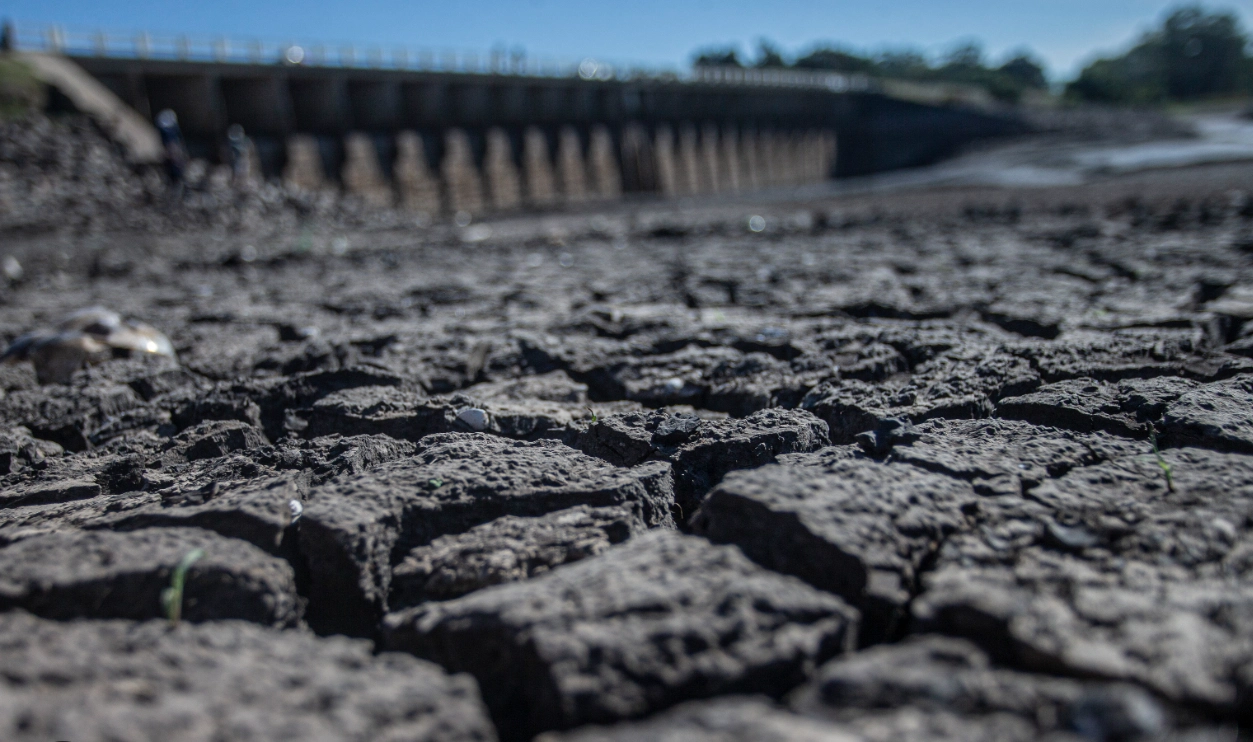Coauthor Micaela Trimble
Since the end of April, more than half of Uruguayans have faced water problems in quantity and quality. The population is being supplied by water with fluctuating concentrations of salinity, which comes from a mixture of drinkable water from the Paso Severino reservoir and brackish water from the Rio de la Plata estuary. The National Administration of State Sanitation Works (OSE) has been working with the Ministry of Public Health to increase the sodium and chloride concentrations in the water distributed as an alternative to avoid water cuts. In the midst of the crisis, the official discourse blames climatological factors, while hoping that the solution will come from the rains.
This discourse has also strengthened the defense of hydraulic projects to increase water supply, such as the Neptune Project. Meanwhile, the management and control measures used in the territory of the Santa Lucia river basin, which supplies the metropolitan area of Montevideo, have not been as fortunate.
The water problem
While the official discourse mentioned that OSE’s water was “drinkable”, without taking into account the potable standards, medical societies recommended that some social groups such as those affected by arterial hypertension, chronic renal disease, heart failure, cirrhosis, or pregnant women should avoid drinking it. Among the consequences of the measures adopted by the government was the promotion of bottled water consumption, which widened social inequalities in terms of access to safe drinking water, which is constitutionally provided for as a human right.
Initially, the concern about the lack of rainfall was with the agricultural productive sector, one of the main economic sectors of the country, which led to the declaration of an agricultural emergency. Subsequently, with the intensification of the problem, there was also concern about water for the population’s consumption. And several months later, a water emergency was declared, which expedited investments in works.
The Uruguayan Institute of Meteorology (Inumet) said that the last three years have been extremely dry and mentioned the relationship between this dry period with the La Niña phase of the Southern Pacific Oscillation phenomenon. In addition, there are studies that show that this drought was intensified by human actions that have involved an increase in temperature.
Although there are climatic factors at play, it is striking that the Government has not focused on other dimensions, for example, water and soil management measures. Nor has it listened to proposals from stakeholders in the basin and the affected area. The opposition, for its part, has criticized the fact that hydraulic projects that were proposed by previous administrations have not been implemented. Instead, priority was given to the Neptuno Project, an initiative involving the private sector and the construction of a plant that will make water from the Río de la Plata drinkable.
Academia and social organizations linked to the subject consider that there are long-standing problems related to the lack of use and control of measures to reduce the environmental deterioration of the basin. This is associated with different conflicts between the different uses of water and soil in the basin. In addition, there is little permeability to social participation in decision-making on water planning, management, and control.
Another area of concern is the loss of drinking water in the distribution networks due to a lack of maintenance. The International Benchmarking Network for Water and Sanitation Utilities (2015) shows that Uruguay has a loss of almost 50% of the drinking water produced in water treatment plants. Thus, the following question arises: Why is the government opting for the expansion of the water supply, instead of taking measures to significantly reduce losses in the distribution network itself?
From centralized decisions to bottled water
The participatory spheres, which were established as a result of the 2004 constitutional reform and which were integrated by different sectors, were belatedly convened to address the crisis. The Basin Commission and the Regional Water Resources Council met only in June, when the crisis was already advanced and when there were almost daily social protests.
However, this is not the first time these bodies have been ignored and their function seriously affected. In other Southern Cone countries, it has also been seen that, in times of crisis, decision-making processes tend to be more centralized, less transparent and participatory, and make explicit the inequality of power between the different actors involved.
In the case of Uruguay, there is one sector that emerged even more empowered: the bottled water market. Water sales tripled after the intentional reduction in the quality of water distributed to the population. In line with what has been suggested by other researchers, beyond discussing the subsidy of bottled water for the lower-income population, this way of passing the responsibility of public drinking water supply to the private sector should be questioned.
In conclusion, it is worth noting that there is no lack of water in Uruguay and that rain alone will not solve this crisis. These statements may come as a surprise, but this crisis goes beyond the lack of water in the reservoirs or the salinity of the water coming out of the tap. On the one hand, it shows us, the insistence of the same governmental responses regarding the expansion of water supply through hydraulic projects. On the other hand, it shows the problems with social participation and the broadening of the discussion of a crisis that affects approximately 2 million people.
Water is not lacking in Uruguay, because even in the face of the supply crisis in the metropolitan area, there was no lack of (bottled) water supply. In other words, there is no doubt that there was a qualitative and quantitative deficit of drinkable water that affected part of the central-southern region of the country unevenly. But the crisis is the result of the measures adopted (or not), which has consequences.
The government opted to lower the quality of the public water distributed, knowing that, with such a measure, there could be a reduction in the population’s confidence in the public company and greater consumption of bottled water (which can be maintained). In other words, the choice was made in favor of the weather (rainfall) and market mechanisms. The former cannot be blamed on political decisions; the latter does not seek to provide an equitable service to the population and neither does it seek to manage a common good.
Micaela Trimble is a professor at the Science and Development Unit of the Faculty of Sciences of Udelar. Associate Researcher at the SARAS Institute (Uruguay). Ph.D. in Natural Resources Management and Environment from the University of Manitoba, Canada.
*Translated from Spanish by Janaína Ruviaro da Silva













